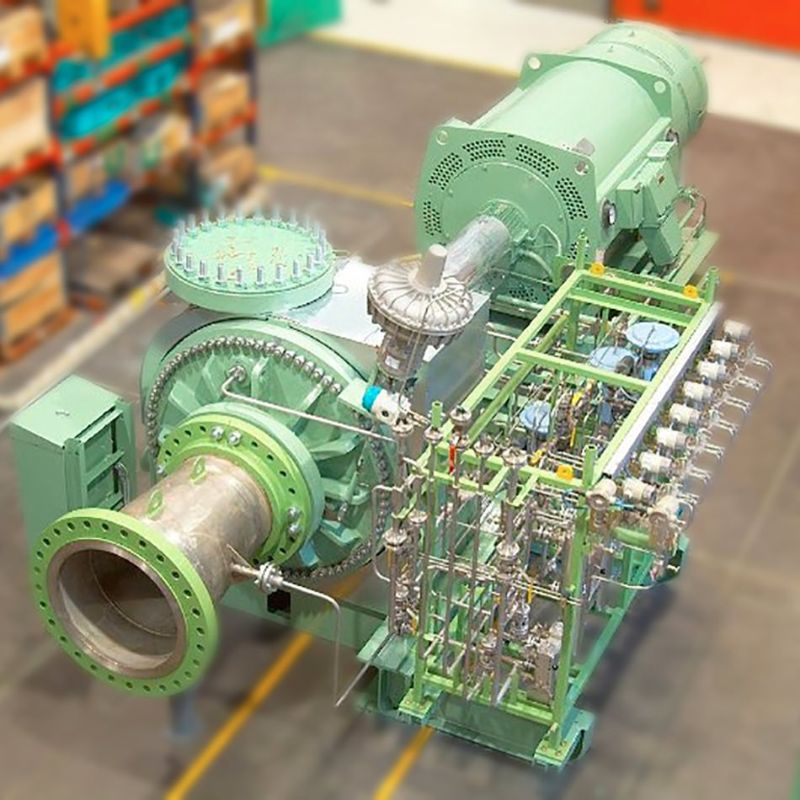Nov-2023
Circular economy strategies for petrochemical sustainability
Sustainability is a journey for the industry, not a destination, and the circular economy is one of the tools to make that journey possible.
Vahide Nuran Mutlu
SOCAR Türkiye Research & Development and Innovation Inc
Viewed : 3913
Article Summary
In an era where environmental concerns are at the forefront of global discourse, industries are being challenged to rethink their practices and adopt more sustainable approaches. The petrochemical industry, a crucial player in global economic growth, is under particular scrutiny due to its significant environmental impact. As we strive for a more sustainable future, the concept of a circular economy has emerged as a promising solution. This article delves into the world of petrochemicals, unpacks the circular economy framework, and explores how circular economy strategies can revolutionise petrochemical sustainability.
Petrochemicals, derived from fossil fuels, play an indispensable role in modern society. They are the building blocks of countless products, from plastics and packaging materials to pharmaceuticals and textiles. However, the petrochemical industry’s linear product life-cycle model, characterised by extraction, production, consumption, and disposal, is riddled with environmental consequences. The greenhouse gas emissions, resource depletion, and plastic waste crisis associated with this linear approach have prompted a re-evaluation of the industry’s practices.
To understand the urgency of adopting circular economy strategies in the petrochemical industry, it is crucial to dissect the emission landscape. This sub-sector’s emissions span a wide range of products, from fertilisers to synthetic fibres, with plastics at the forefront. Additionally, emissions arising from oil refining, which is intricately linked to the petrochemical process, must be considered. Oil refining serves as the precursor to various petrochemical processes and contributes significantly to emissions.
When both the emissions from oil refining and chemical plants are combined, their cumulative impact is staggering. This combined category accounts for approximately 30% of total industrial emissions, a substantial share. To put it in a global perspective, these emissions amount to more than 9% of the total greenhouse gas emissions, showcasing the magnitude of the challenge at hand.
Unveiling the circular economy
The traditional linear product life-cycle model in the chemical and petrochemical industry has undeniably led to environmental degradation, resource depletion, and a plastic waste crisis. This model is no longer tenable, especially when the emissions associated with this industry are both significant and avoidable. Enter the circular economy, a framework that seeks to disrupt the linear status quo and bring about sustainable transformation.
The circular economy presents an alternative paradigm. At its core, this concept envisions a system where resources are used, reused, and regenerated in a closed loop, minimising waste and environmental impact. Instead of the traditional ‘take, make, dispose’ model, a circular economy promotes a ‘reduce, reuse, recycle’ ethos.
In the context of the petrochemical industry, a circular economy entails transforming the linear product life cycle into a circular one. This means designing products for longevity, ease of repair, and eventual disassembly to recover valuable materials. It also involves embracing renewable feedstocks, such as bioplastics derived from plant materials, to reduce dependence on fossil fuels.
Extended producer responsibility (EPR)
One of the foundational principles of a circular economy is extended producer responsibility. This concept mandates that producers take responsibility for the entire life-cycle of their products, including their eventual disposal. The goal is to internalise the costs of environmental management within the production process, incentivising more sustainable practices (see Figure 1).
In the petrochemical realm, this translates to manufacturers designing products that can be easily dismantled and recycled at the end of their useful life. This strategy not only reduces waste but also drives innovation in product design and materials selection.
Producers are tasked with establishing efficient collection and recycling infrastructure for their products. In the petrochemical sector, this involves creating systems that enable the proper collection and processing of plastics, chemicals, and other products. This infrastructure may include dedicated collection points, partnerships with recycling facilities, and innovative technologies for material recovery.
EPR often involves financial mechanisms that compel producers to cover the costs associated with the collection, recycling, and proper disposal of their products. This financial responsibility can drive producers to design products with fewer hazardous materials, reduced environmental impact, and increased recyclability, thereby minimising the costs associated with end-of-life management.
To align with EPR principles, producers are encouraged to adopt sustainable materials in their products. In the petrochemical industry, this might involve transitioning from conventional plastics derived from fossil fuels to biodegradable plastics or bio-based feedstocks. Such a shift not only reduces the environmental impact of products but also contributes to the development of a circular economy.
By encouraging producers to design products with longevity and recyclability in mind, EPR helps conserve valuable resources. The petrochemical industry relies heavily onfossil fuels and raw materials; EPR-driven practices can lead to reduced consumption of these resources by promoting recycling and material recovery.
EPR’s emphasis on product recovery and recycling contributes to a significant reduction in waste generation. With proper collection and recycling infrastructure in place, fewer products end up in landfills or incineration facilities, reducing the environmental burden associated with waste disposal.
EPR stimulates innovation in product design and manufacturing processes. Producers are incentivised to develop products that are not only environmentally responsible but also economically viable. This drive toward circular design can lead to the creation of new markets and business models centred around resource efficiency and sustainability.
EPR encourages collaboration between industry, government, and consumers. It fosters a sense of shared responsibility for environmental stewardship and creates a platform for dialogue and partnership among stakeholders. This collaboration can lead to more effective policies, streamlined waste management systems, and increased public awareness.
Add your rating:
Current Rating: 5

















